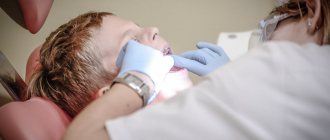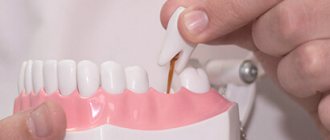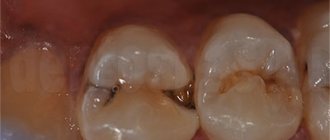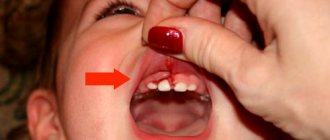Imagine a mouth with rotten teeth and the smell that comes from them, it is not difficult to guess how repulsive and unpleasant a person with such a problem looks. Bad teeth greatly spoil the impression of a person’s appearance, prevent him from communicating normally with other people, and disrupt his psychological state.
However, this problem is not only aesthetic. Dentists warn that rotten teeth cause arthrosis, polyarthritis, and disrupt the condition of the skeletal system. The products of decay and the microbes that provoke them are carried throughout the body with saliva and blood. A person begins to have problems with organs that, at first glance, have nothing to do with teeth. The infection gradually affects the bone tissue and can reach the brain.
What happens if you ignore the body’s signals, drown out the pain with pills, mask the smell with air fresheners? It may be possible to hide the negative symptoms for a while. However, as they accumulate, they will lead to the appearance of other and not only dental problems.
Dental hyperesthesia: causes, symptoms, treatment
Content:
What is dental hyperesthesia
Causes of dental hyperesthesia
How does dental hyperesthesia manifest (symptoms)
Classifications of dental hyperesthesia
Development of complications
Stages of treatment
Doctor's advice
Answers on questions
Dental hyperesthesia is a high sensitivity of enamel that occurs when exposed to various irritants.
What is the cause of fear?
Why are people afraid of visiting the dentist? The reasons may be different:
- Fear acquired during life
is formed against the background of negative experiences of past visits to the doctor. This is the most common case. - A phobia generated by imagination
is based on far-fetched fears: stories from friends, things seen in movies, etc. - Hereditary fear
is an attempt to avoid pain in any of its manifestations. The desire to protect ourselves is embedded in us at the genetic level: the mouth is a sensitive part of the body, and therefore it seems to a person that any invasive manipulation in the mouth will be very painful.
A psychotherapist will help you get rid of severe dental phobia: you will be able to overcome the pathology only after hard work on yourself.
According to statistics, only every fifth person treats visiting the dentist as calmly as going to the cinema or the hairdresser. So what should you do to visit a specialist without fear?
Causes of dental hyperesthesia
- Mechanical damage: cleaning with bleaching paste, a hard brush and/or rough cleaning.
- Exposure to acids: regular consumption of juices, sodas. Long-term exposure of these drinks to enamel leads to the destruction of hard tissue.
- As a symptom of caries, wedge-shaped defect.
- A decrease in the level of gums (recession), as a result of which the roots become exposed and hyperesthesia of hard tissues occurs.
- Poor-quality bleaching: the use of aggressive chemical solutions, the impact of which damages the enamel structure.
Caries on baby teeth
As a result of long-term research, scientists were able to identify the main cause of caries in baby teeth. It becomes: microorganisms transmitted to the child from the mother. Streptococcus gets to the baby through a kiss, through a pacifier licked by the mother, or shared cutlery. Microbes come from other people through these same routes. When teething, babies are especially vulnerable to streptococcus. In addition, lack of oral hygiene, poor diet, and the composition of saliva have a negative impact.
Dentists point out that regular use of baby formulas from a bottle with a high carbohydrate content creates ideal conditions for the development of bacteria. Getting your baby used to a cup and rinsing his mouth after eating helps reduce their negative effects.
previous post
Pin in a tooth: types and advantages of design
next post
How does dental hyperesthesia manifest (symptoms)
Symptoms of hyperaesthesia:
- Pain of various types: from minor to unbearable when eating. Duration from several seconds to a minute.
- Inability to eat too cold or hot food due to pain discomfort.
- Sensitivity when breathing in cold air through the mouth.
- Pain when cleaning, when eating rough food.
It should be noted that pain can occur in one tooth or in several. In exceptional cases, the process extends to half the jaw. Cervical tooth sensitivity most often affects the upper and lower premolars.
If such symptoms occur, it is recommended to immediately consult a doctor at a professional dental center.
Characteristic symptoms and stages of disease development
Dental problems manifest themselves in different ways. It depends on the degree of damage, the sensitivity of the body, and the number of problem areas. Tooth decay does not occur in just one day.
Dentists distinguish several characteristic stages, which are characterized by certain symptoms:
- Unpleasant smell. At first it is not too noticeable. Gradually, even during a conversation, the interlocutor feels a putrid “aroma”. Its source is pathogenic bacteria. They inhabit plaque that forms at the point of contact between the gum and tooth.
- Stains on the enamel. This is the next stage of the disease, when the damage spreads deeper and damages the enamel.
- Black areas. If they are located on the root, it is very difficult to notice them. To clarify the extent of the damage, an x-ray is taken.
- Formation of the cavity. A cavity forms in place of the black spot. Through it, food debris gets to the inside of the tooth. The tooth actively “signals” about the problem with painful sensations, reaction to hot and cold.
- Pulpitis develops. By not consulting a doctor in time, the patient allows inflammation to reach the pulp. Soft tissues containing blood vessels and nerves undergo rotting. It is accompanied by sharp, unbearable pain.
The decay process ends in different ways. If it starts from the top of the tooth, it gradually spreads to the root. After the nerve dies, the pain intensity decreases. If decay affects the root first, the tooth may fall out or have to be removed.
Stages of treatment
After examination and diagnosis, the dentist determines the cause of this disease. It is from this that the treatment plan for hyperesthesia of tooth enamel will be built.
- If the disease is caused by caries, then caries treatment is carried out.
- If sensitivity occurs due to incorrectly selected home hygiene products, then the doctor individually selects a brush and paste for the patient. The enamel is also treated with a special solution - remineralizing gel.
- When a patient experiences recessions, surgical operations are performed to eliminate them.
Treatment of enamel hyperesthesia is a comprehensive approach to the problem, including examination, diagnosis, elimination of the cause and symptoms.
Do not self-medicate, consult a doctor!
Don't wait for your condition to worsen!
Sign up
Negative factors beyond the patient's control
If a person does not smoke, engages in debate, and watches his diet, why do his teeth begin to rot? There may be several reasons for this:
- Bad ecology. Polluted air, poor quality water, an excess of some and a lack of other important components. Fluoride deficiency is often cited as the cause of dental problems.
- Heredity. If the parents had bad teeth or the mother did not visit the dentist during pregnancy, children often experience similar problems.
- Physiological features. Hormonal imbalance in adolescents during the growth period, in pregnant and lactating mothers.
Tooth decay is often a consequence of other diseases. Problems with periodontal tissues - gingivitis, periodontitis, periodontal disease - lead to the development of caries and cause tooth loss. If a purulent cyst forms near the root, the infection quickly spreads to the tooth. Often the deterioration of teeth is caused by diseases of the stomach, intestines, and thyroid gland.
Doctor's advice
Prevention of hyperesthesia will include the following:
- Avoid using whitening pastes. These pastes contain high abrasive particles, which, when exposed to friction from the brush, destroy the surface layer of enamel. If the patient wants to whiten the enamel, it is better to seek professional whitening at a dental clinic.
- Reduce (or better yet eliminate) the consumption of juices/carbonated drinks. The acids contained in these drinks destroy enamel, causing not only tooth hypersensitivity, but also caries and wedge-shaped defects.
- Visiting the dentist once every six months for a preventive examination and timely treatment of caries, wedge-shaped defects, etc.
How to overcome the fear of visiting the dentist?
Fear of visiting the dentist (dental phobia) is not a fiction at all, it is a completely relevant clinical term. Dental phobia is a pathological fear of dental treatment, the dentist, and even the equipment in the clinic.
Fear of visiting the dentist (dental phobia) is not a fiction at all, it is a completely relevant clinical term. Dental phobia is a pathological fear of dental treatment, the dentist, and even the equipment in the clinic. Dental phobes will endure toothache until the last moment, preferring to swallow painkillers by the handful. If you are one of those “lucky” ones, you will probably be interested in learning how you can overcome fear.
Why is there fear of the dentist?
Today, almost all diseases in the oral cavity can be successfully treated by experienced dentists. At the same time, there are a huge number of problems with gums and teeth, including advanced ones, all over the world. Why is this happening?
One of the factors is the same dental phobia. Unfortunately, dental phobia is often the result of a negative experience of dental treatment in childhood - the child could simply be treated with restraint or severely frightened during treatment by the sound of a drilling machine.
By postponing a visit to a specialist until the last minute, you may end up in extremely difficult situations. So, for example, one small carious cavity, which would not be difficult to eliminate, without proper treatment can develop into a serious pathology, for example, acute pulpitis or periodontitis, or even lead to tooth loss.
People who are afraid of dental procedures react extremely strongly even to medical terms, for example, when they hear “root canal cleaning,” their imagination immediately draws horrifying pictures of pain and suffering. Many of us simply cannot believe that all manipulations can be performed absolutely painlessly.
Professional dentists perceive such fear as quite commonplace. This is one of the components of daily practice, therefore every dentist is, to some extent, a psychologist: he will find an individual approach to each patient in order to calm him down, relax him and perform all manipulations as quickly as possible.
It has been found that most dental patients are intimidated by one particular thing: needles. This may be due to childhood fears of injections. Be that as it may, the doctor will always suggest numbing the injection site first. The applied gel freezes the gums, and inserting a needle with an anesthetic does not cause any discomfort.
For particularly sensitive patients, it will be useful to know that modern dentistry allows caries treatment without drilling teeth. However, it is worth considering that this is only possible in the early stages of the disease. And this, we believe, is a significant reason to overcome dental phobia and not aggravate the situation.
If it is necessary to perform complex surgical operations, the dentist will offer treatment “in your sleep,” that is, in a state of general anesthesia. In this case, the patient will not feel any pain at all during the treatment process, and a large amount of work can be done at once.
In case of increased anxiety, caries treatment can also be carried out under sedation - the patient inhales nitrous oxide through a special mask, relaxes and undergoes treatment without fear.
How to deal with fear?
If the arguments of specialists and your own willpower alone are not enough, then here are some recommendations for you on how to behave if you are afraid of dentists:
- Make an appointment with the dentist for a consultation. And only a consultation. If you are subconsciously sure that no procedures will be performed, entering the office will become much easier.
- During the consultation, the doctor will probably put you at ease. Don't be afraid to admit your fears. Feel free to ask questions about the treatment method, instruments used, etc. In practice, you can make sure that everything is not so scary.
- Find out what options for pain relief are offered at the clinic - is it possible to perform dental treatment under sedation.
- If the doctor has earned your trust, you have chosen the appropriate method of pain relief and there are no more questions left, feel free to make an appointment!
Overcome your fears and be healthy!
Return to list of articles
Answers on questions
When does sensitivity go away after whitening?
With proper whitening, all discomfort goes away after 3-5 days.
How to choose a toothbrush and toothpaste so as not to harm the enamel?
It is not recommended to use a hard brush or whitening paste. The selection of home hygiene products should be individual for everyone. We recommend making an appointment with a dentist.
How to get rid of sensitivity at home?
No home remedy will help eliminate this disease. Do not self-medicate: this will cause complications! It is recommended to consult a dentist so that the doctor can provide quality treatment.
How to get ready for effective treatment
Dentophobia does not only affect the patient. The dentist must also understand what to do with a patient who is terrified of the chair. Experienced doctor:
- Talk to a person;
- Find out the degree and specific cause of his fear;
- He will explain how the procedure will be carried out and what the result will be.
Modern dentists’ offices use methods that allow them to tune in to the upcoming treatment:
- A background of classical music and pleasant natural noises is created, promoting calm and relaxation;
- There are rooms where patients are offered video glasses to watch a movie.
If the available options for relieving stress fail, anesthesia is used. A psychotherapist can reduce severe dental phobia using special techniques.
Prevention measures
It is difficult to prevent chipped teeth, but you can strengthen the enamel and increase its resistance to mechanical stress. To do this, you should adhere to the following recommendations:
- adhere to the rules of oral hygiene;
- eat well;
- treat caries promptly;
- Visit your dentist twice a year for professional cleanings and examinations;
- give up bad habits, cracking nuts;
- undergo orthodontic treatment if necessary;
- keep systemic and endocrine diseases under control;
- minimize the risk of injury.
For an in-person consultation and choosing a method of tooth restoration, you can contact one of the STOMA clinics. The professionalism of our dentists and a wide range of modern high-quality materials allows us to offer patients high-quality treatment and effective restoration. You can make an appointment either by phone or through a special form on the website.
Symptoms of chipping
If the chip is small, no symptoms may appear. Sometimes a person begins to guess about a chip because of the appearance of roughness of the tooth or its sharp edge. If we are talking about a tooth in which the pulp was previously removed, then even a large chip will not lead to pain.
In the event that part of the enamel next to the installed filling was chipped, this can affect its service life and even cause immediate loss or destruction.
Despite the fact that a small chip sometimes only causes aesthetic inconvenience, it is better to restore the previous shape of the tooth crown as soon as possible. Otherwise, the tooth may continue to deteriorate, and the rough enamel surface is an ideal environment for the proliferation of cariogenic bacteria and plaque accumulation.
Methods for restoring a tooth after a chip
In cases where a piece of a tooth has broken off, the doctor will conduct a visual examination. X-rays and other additional examinations may be required to select a treatment method.
For minor chips, it may be enough to saturate the enamel with minerals and make the surface of the damaged area smooth. This is especially true in cases where slight grinding of tissues will not lead to an aesthetic defect, for example, asymmetry.
With an average chip, it is difficult to do without the use of artificial materials. You will need to use a filling material, an artistic restoration method, or other tools to restore the shape of the tooth.
When the pulp is opened, it will most likely be removed, the root canals will be filled, and the crown will be restored with a filling or prosthesis. Sometimes it is not possible to restore a tooth. Then its removal and subsequent installation of an implant is required.
The method of restoration is determined by several factors: the degree of destruction, the diagnostic result and identification of the causes of the chip, the general condition of the oral cavity, the wishes of the patient, etc. Let us consider the methods of restoring teeth after various chips in more detail.
Chewing gum, floss and toothpaste are a panacea for caries
Reality: Even the best toothpaste in the world will not cure your tooth! Chewing gum only restores the acid-base balance disturbed during meals. Floss, or, as they more often say, dental floss, is also not a doctor for our teeth. All of the above remedies are good for preventing the occurrence of carious lesions, but given the existing pathology, they are not able to not only cure, but even stop the process.
What to do?
It is necessary to use all of the above means, but only along with systematic visits to the dental office for preventive examinations, professional hygiene and sanitation of the oral cavity, i.e. treatment and maintenance in proper condition of all teeth with one or another pathology.
The difference between chips and other diseases
Many patients confuse chips with similar injuries or diseases of the oral cavity. However, despite the similarities, it is important to distinguish certain conditions into separate problems that require a completely different approach to treatment. The most common similar conditions are the following:
- Tooth fracture. It exposes the coronal and sometimes the root part of the pulp, which leads to its death; it is almost impossible to save a tooth with a root fracture - it must be removed.
- Wedge-shaped defect - looks like a chip in the cervical part of the tooth; it is a non-carious lesion. In especially severe cases, such an enamel defect can cause the entire crown to chip off.
- Chip accompanied by dislocation. It usually appears as a result of injuries and complicates the treatment process, since the doctor’s task is not only to restore the shape of the crown, but also to treat the dislocation.
That is why, in cases where part of a tooth has broken off, an accurate diagnosis is carried out. Mechanical injury requires careful assessment of the consequences before starting treatment. The dentist may prescribe x-rays and other examination methods and methods to exclude serious consequences of damage.
Ask a Question
Heredity is to blame for bad teeth
Reality : The role of heredity in the health of our teeth is extremely small and is manifested in the structure and properties of tooth tissue: enamel and dentin. In fact, a person even with not very good heredity has every chance of keeping his teeth healthy.
What to do?
Take proper care of your teeth throughout your life and make regular visits to your dentist.
Fact: Today, there is an opposite theory that lesions of specific teeth may indicate a predisposition to the pathology of a particular organ or an already existing disease.
Correlation of teeth affected by caries with pathology of internal organs










